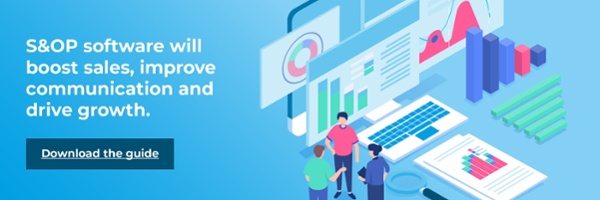Demand planning and forecasting solutions help your business remain predictable and profitable in an ever-changing market. Imagine a system that uses data to react dynamically and forecast changes to your supply chain and customer demand.
We only have to look at the effect of political and economic uncertainty in the 2019 Christmas period to see the importance of real-time detection and response to events. With many retailers reporting at best lacklustre results, and for some profit warnings during this crucial period of trading. With access to crucial management information in real-time, it’s now easier than ever to stay ahead of events.Let’s do a deep dive on the process of demand planning.
What is Demand Planning?
Your supply chain is constantly at risk from external factors. Worker issues, weather patterns, natural disasters, international events, political and economic uncertainty and competition will all have a certain probability for influencing demand. The actual processes and techniques behind supply chain management are also subject to change. This is where demand planning comes in.
Effective demand planning and forecasting is based upon the gathering of data. By using demand patterns and algorithms to assess this data, demand planning can accurately and reliably predict demand for specific items or services within the supply chain.
The process can improve several factors. For example:
- Revenue forecasts can be more accurate.
- An aligned inventory with the peaks and troughs of national and international demand.
- Particular channels, services or products are made more profitable.
Implementing a demand planning process is an effective way to increase customer satisfaction and cross-organisation transparency. If the individual processes and departments of your company are siloed and compartmentalised to the point where integration is incredibly difficult, you won’t be able to adapt successfully.
By gathering data both internally and externally, the demand planning process can integrate company-wide responses in real-time. It’s all about ensuring accurate forecasts and timely action is taken across the board.
How Does Demand Planning Work?
A successful demand planning process involves several important steps and covers many bases. The following are key areas that demand planning enhances to keep your business agile.
The Management of Trade Promotions
When employing trade promotions to increase demand in targeted areas it is now possible to track results in real-time. By integrating your data and departments, trade promotions and their effects are easier to track. As a trade promotion is meant to help particular brands stand out for periods of time, effective demand planning can make the effects of promotions last for longer.
Trade promotions work best when departments act collaboratively. You can make adjustments to any campaign without delay or inaccuracy. You’ll gain insight around your promotion spend in real-time, so that adjustments can be made whilst trade promotions are happening to improve performance. Your business no longer needs to wait until long after the promotion is over to assess results. This provides a step-change in your ability to affect the tangible return on investment.
The Management of Your Product Portfolio
Effective management of your product life cycles is crucial. This includes planning from the point of production to end-of-life.
Demand planning allows management to view the entire portfolio and lifecycles from the top down. It helps to maintain a good grasp of demand spikes and where any issues along the lifecycle occur.
Product portfolio management also requires a view of how new products affect the popularity and profitability of pre-established products or services. Accurate scenario-based profitability modelling supports feasibility assessment for new products in development. This moves products from ideation to realising with greater confidence.
Statistical Forecasting
Statistical forecasting is a powerful operational strategy an organisation can capitalise on.
Feeding historical data through advanced algorithms to generate supply chain forecasts helps the supply chain flow and not get stuck on overstock or stock-outs. Those involved in the process can analyse forecasts, make judgements and product decisions.
When forecasting using a demand planning software, user-defined parameters can be created and adjusted. These are used to pinpoint outliers and exclusions within any forecasting reports.
What Are The Risks of Changing Demands?
The role of demand planning and forecasting within your sales and operational planning (S&OP) models is nothing short of integral. For all their wide-reach and multinational impact, markets can be both fragile and fickle at times. Demand planning is important because it matches the speed of these changes in terms of providing dynamic, elastic responses.
Unsatisfied customers or issues with stock levels are never welcome as they amount to nothing but a damaged reputation and wasted money. Furthermore, inadequately planning for factors such as seasonality can result in a lacklustre quarter in terms of sales.
By utilising the adaptable features of demand planning software and processes, organisations can remain agile, placing themselves one step ahead of market volatility. Now, real-time demand planning is more effective than ever before thanks to the additions of cloud-based planning platforms and machine learning.
To effectively protect your organisation from industry-related risks and also incorporate the above features, you’ll need advanced S&OP software.
Discover Which S&OP Software Is Right For You
We’ve created a guide to help you discover the perfect sales and operational planning software.
By using the guide, you’ll discover why S&OP software is truly important for growth within today’s markets. You can also see the key features an effective S&OP software should have, key benefits and much more.
Make sure you’re prepared for the future and download our guide today.



